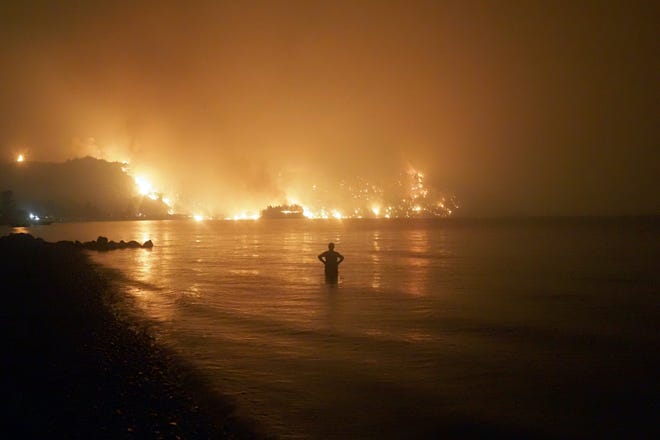
- Evidence shows that carbon dioxide is the main driver of climate change, the report says.
- Almost 200 countries have signed up to the Paris climate accord.
- The report comes three months before a major climate conference in Glasgow, Scotland.
Hundreds of top scientists released a devastating report Monday on the danger that human-caused climate change poses to the world.
Calling it "code red for humanity," the landmark report was released in Geneva by the United Nations' Intergovernmental Panel on Climate Change (IPCC).
Many of the changes seen in the world's climate are unprecedented in thousands, if not hundreds of thousands, of years, and some of the changes already set in motion – such as a rise in sea levels – are irreversible over hundreds to thousands of years, according to the report.
Wild weather events, such as storms and heat waves, are expected to worsen and become more frequent.
“Climate change is already affecting every region on Earth, in multiple ways, (and) the changes we experience will increase with additional warming,” said Panmao Zhai of the IPCC.
The evidence is clear that carbon dioxide is the main driver of climate change, even as other greenhouse gases and air pollutants play a role, the report says.
The 3,000-page report "provides an unprecedented degree of clarity about the future of our planet, and the need to reduce – and ultimately eliminate – our emissions of greenhouse gases," said Zeke Hausfather of the Breakthrough Institute, a global environmental research center.
'Worst is yet to come': Disastrous future ahead for millions worldwide due to climate change, report warns
The report, which calls climate change clearly human-caused and “unequivocal,” makes more precise and warmer forecasts for the 21st century than it did last time it was issued, in 2013.
“If this IPCC report doesn’t shock you into action, it should," said Helen Mountford of the World Resources Institute, a research nonprofit organization. "The report paints a very sobering picture of the unforgiving, unimaginable world we have in store if our addiction to burning fossil fuels and destroying forests continues. One of the most striking takeaways is that we may reach 1.5°C of warming a decade earlier than the IPCC had previously found."
What climate change looks like:Eye-opening images of what climate change has done and could do to our world

Almost 200 countries have signed up to the Paris climate accord, which aims to keep global warming below 2 degrees Celsius (3.6 degrees Fahrenheit), ideally no more than 1.5 degrees Celsius (2.7 degrees Fahrenheit), by the end of the century compared to pre-industrial times.
The report projects that in the coming decades, climate changes will increase in all regions. For 1.5°C of global warming, there will be increasing heat waves, longer warm seasons and shorter cold seasons; at 2°C of global warming, heat extremes would more often reach critical tolerance thresholds for agriculture and health, the report shows.
Getting warmer: 'Wake-up call:' Climate change could edge Earth's annual temperature past Paris greement limits in 5 years
“Scientists have predicted the likelihood of accelerating climate change for more than a century now – yet too often their warnings have been disregarded," said Katharine Hayhoe, chief scientist for the Nature Conservancy. "My hope is that the rigor, transparency and unprecedented urgency of this latest IPCC report will make it simply impossible to ignore."
Though many of the report’s predictions paint a grim picture of humans’ impact on the planet and the consequences that will have going forward, the IPCC also found that so-called tipping points, such as catastrophic ice sheet collapses, are “low likelihood,” though they cannot be ruled out.
The report comes three months before a major climate conference in Glasgow, Scotland.
Contributing: The Associated Press
Source link









